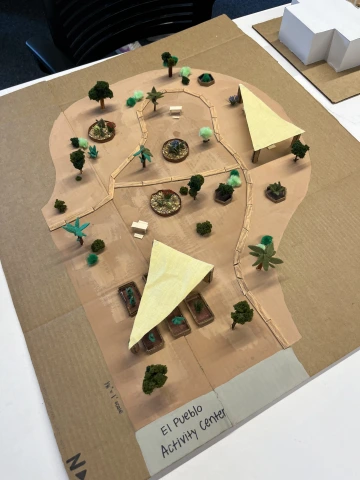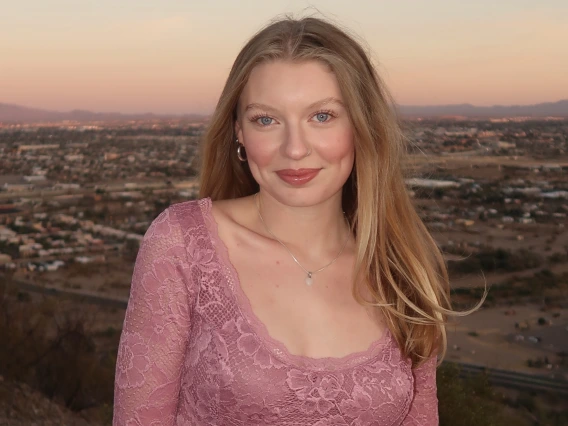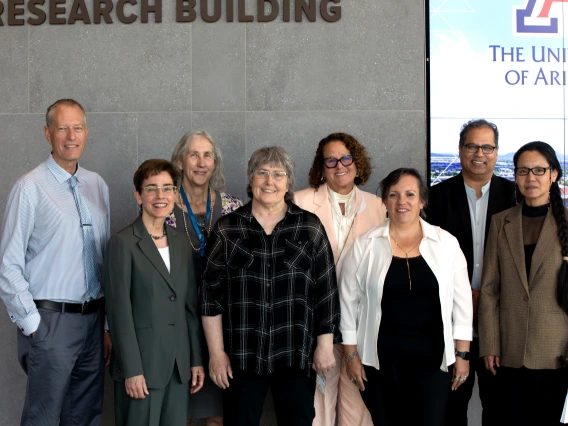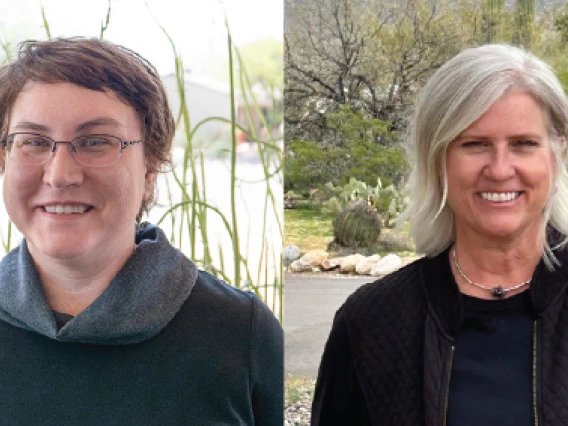Shining in SBE: Soleil Lemons ‘26 SBE
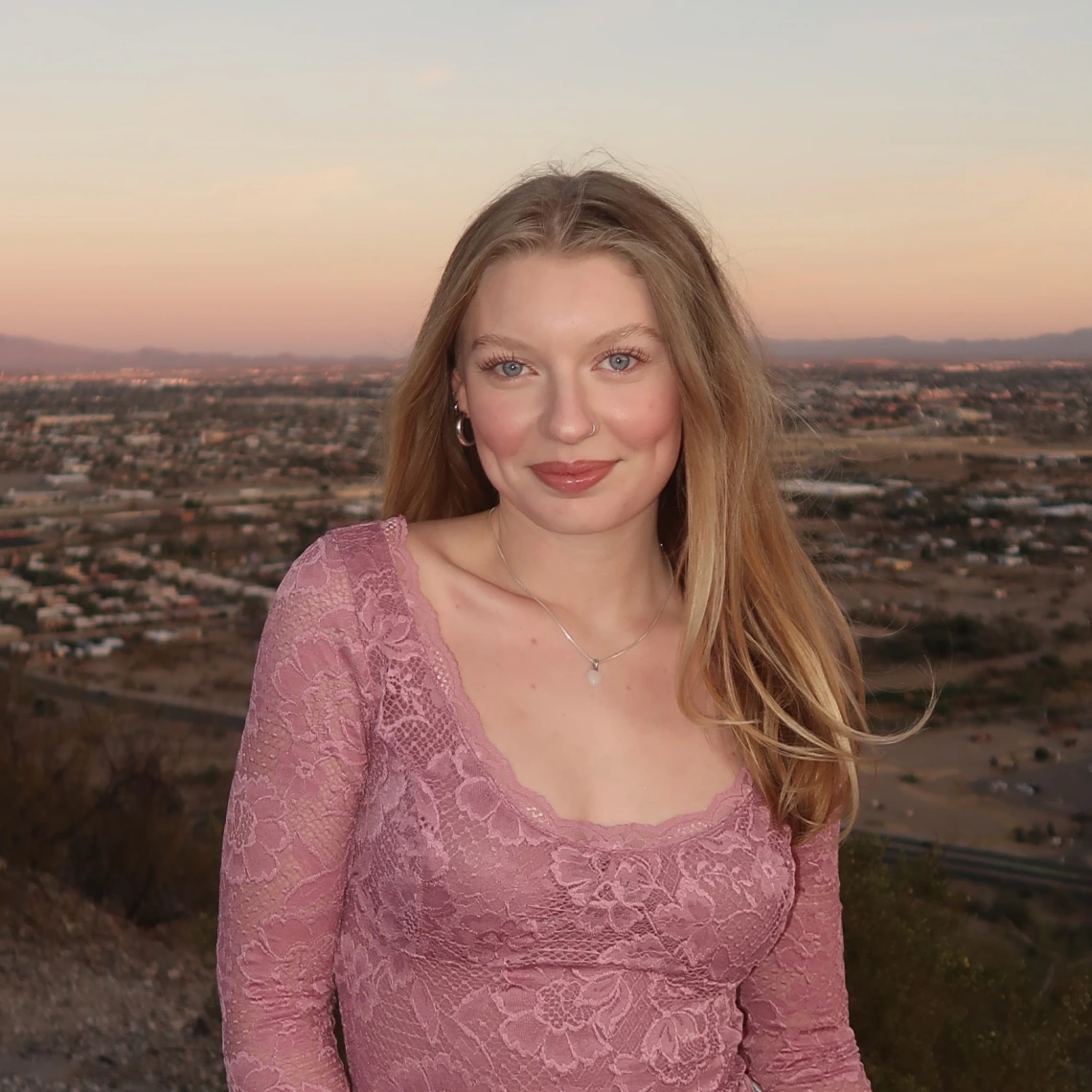
8 Questions with Soleil Lemons
“CAPLA is full of intelligent, skilled and kind faculty who have made my experience immensely better. I believe having professors who are invested in my academic and professional journey are a big reason for my success.”
Soleil Lemons joined CAPLA her second year at the university, and has thrived studying sustainable built environments. Her experience has shaped her future, and she now plans to pursue her Master’s Degree in Urban Planning and land a job as a project manager or coordinator.
1. What brought you to the University of Arizona?
I knew I wanted to stay on the West Coast for college and attending the University of Arizona meant I got to do that, while also exploring a new place. I initially committed to the University of Arizona to attend the Eller College of Management as I was interested in their unique entrepreneurship program, but later decided to join CAPLA my sophomore year.
2. If you have a particular interest in SBE, what is it and what excites you most about it?
Within SBE, I have found a great interest in design and planning. The diverse array of courses gave me an opportunity to see what it means to create sustainable built environments. I think that the design and planning aspects of SBE excite me the most as there is an opportunity for me to showcase both my creativity and problem-solving skills.
I am a naturally curious and detail-oriented person who enjoys thinking about how spaces function and how they impact people’s daily lives. I also find the different approaches to design and planning intriguing. Each individual brings a different perspective and this immensely influences the result.
3. What do you like best about SBE and CAPLA?
Since joining CAPLA, I have found a great network of professionals and mentors. CAPLA is full of intelligent, skilled and kind faculty who have made my experience immensely better. I believe having professors who are invested in my academic and professional journey are a big reason for my success.
Within SBE, I have found peers who share my passion for driving change through the built environment. This makes the program feel tight-knit, which encourages my learning in a new way. I enjoy having smaller class audiences and applying myself through hands-on, project-centered learning. Overall, I appreciate the nature of the SBE curriculum as well. It feels “live” because the topics I learn are fresh and relevant to the climate of the world.
4. What projects are you most proud of and why?
I am most proud of my Sustainable Site Design project for SBE 301: Introduction to Design Thinking. I put a lot of effort into my deliverables for this course as the topics truly inspired me.
For my project, I was tasked to create a virtual and physical model of a sustainable site design idea for a local community center. I chose to design a community garden and utilized different design platforms to create virtual renderings of my idea to accompany my 3D, physical model. I pushed myself creatively through the execution of this project and showcased my newly formed skills.
5. What has been your biggest challenge at CAPLA, and how have you overcome that challenge?
One of the biggest challenges I have faced has been my science-based coursework. While not directly under CAPLA, there are a few science and lab-related requirements. I was a business major my first year at the university, so switching to CAPLA was a pretty significant change in terms of coursework. I really struggled through my physics, biology and chemical engineering courses.
Looking back, I think what helped me succeed in these courses was discipline. This meant showing up every day and applying myself fully to whatever I was learning. This was challenging as sometimes it meant applying myself fully toward something that was unfamiliar, or simply difficult.
6. Can you tell me about what you are doing this summer? What kind of things are you learning and how is the experience shaping your future goals/plans?
This summer, I am working as a landscape management intern at Yellowstone Landscape. Yellowstone Landscape is a commercial landscaping company that executes landscape installations, enhancements and maintenance across Tucson. I applied to this position because I believed it combined many disciplines I could see myself pursuing in my future career: landscape design, planning, project coordination, management and leadership. Eight weeks in, and I have definitely been exposed to each of these things.
This position has allowed me to shadow many professionals in their areas of expertise around the company. I have worked alongside account managers, designers, operations supervisors and even our branch manager. I have learned about client management, contract estimating, landscape design rendering and operational management. This experience has been extremely hands-on and operations-focused.
Part of my responsibilities include assisting with takeoffs. Takeoffs include quantifying materials for projects using design plans. This has exposed me to planning and design operations which I find extremely intriguing. Spending more time in this area has encouraged me to pursue my Master’s Degree in Urban Planning, where I hope to enter the urban planning or design field as a project manager or coordinator.
7. What are your hobbies and passions?
Outside of school and work, I enjoy reading and spending time outdoors. Whether it’s going on a sunset walk or biking around town, I love spending my time exploring Tucson. One of my favorite things to do in Tucson is try new restaurants and coffee spots with my friends.
8. What advice do you have for prospective CAPLA students?
Do not shy away from experiences or opportunities just because they don’t perfectly align with your goals. Some of the most valuable opportunities come from saying yes to things that feel a little outside your comfort zone.
Even when an experience didn’t directly relate to my academic or professional aspirations, I have walked away with a new skill, an unexpected interest or a meaningful connection. If you remain open-minded, I would almost guarantee you will walk away from every experience with something meaningful.
"El Pueblo Activity Center" - SBE 301: Introduction to Design Thinking | Sustainable Site Design Project
